Lakes are undoubtedly among the most beautiful bodies of water on Earth. With their clear-blue waters reflecting the magnificence of nature that surrounds them and showcasing various glorious ecosystems within, lakes are stunning and utterly calming to look at. However, some lakes are not easily or readily visible to the naked eye, and not all lakes can be seen just by passing by.
Apart from the fact that lakes lie at different elevations, some lakes need to be deliberately visited for you to bask in their beauty. Underground lakes or subterranean lakes are lakes that are nestled under the Earth’s surface. You can find caves, aquifers, and springs near such lakes, and they usually have a relatively low salinity. This article will list down to the 11 largest underground lakes in the world, where to find them, and other fascinating facts that make them unique.
The 11 Largest Underground Lakes in the World
11. Krizna Cave Lake, Slovenia

Krizna Cave is the world’s longest spring cave.
©Tomaž Planina / Creative Commons – License
Slovenia is known for its lush woods, crystal-clear lakes, and caves. Surprisingly, the lesser-known Krizna Cave (Križna Jama), is regarded as one of the most attractive caves, as water carved beautiful structures and stalactite pillars out of the rock. In addition, the cave conceals 22 gorgeous green lakes, which can all be crossed via boat. Stretching 5.46 miles or 8.8 kilometers, Krizna Cave is regarded as the world’s longest spring cave, with each of its lakes reaching 25 feet deep. The cave may not have an underground lake as a whole, but its collection of caves is enough to satisfy your longed boating experience. There’s also a water cave inside, where water runs past lakes and reservoirs, disappearing for a while and reappearing in different cave places.
10. Son Doong Cave, Vietnam
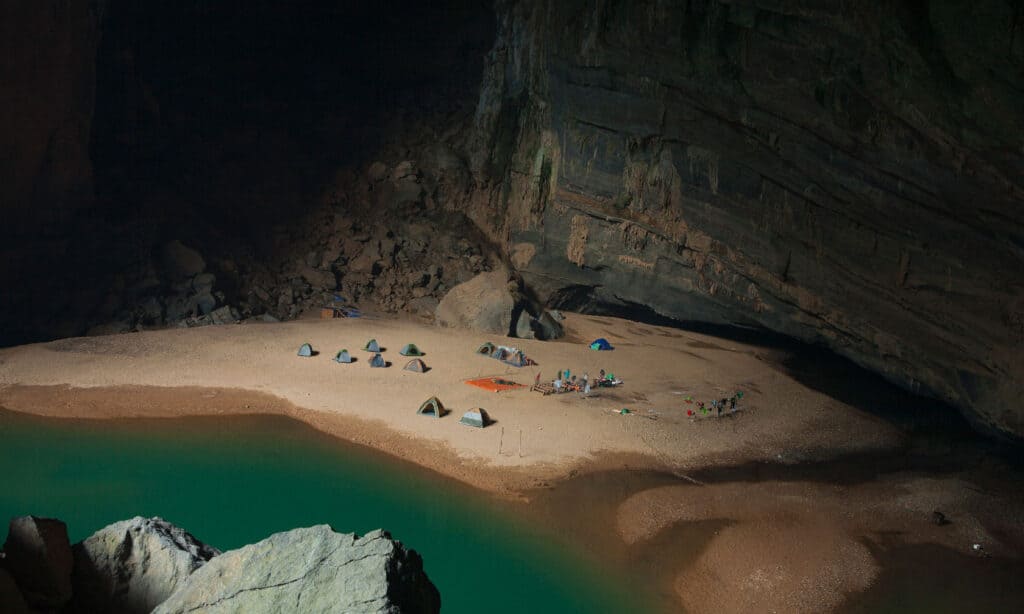
The largest cave in the world is Son Doong Cave.
©iStock.com/Rasmus_Christensen
Son Doong Cave in Vietnam is regarded today as the world’s largest cave. It stretches over 9 kilometers long (5.6 miles long), with the cave’s biggest part reaching 200 meters (656 feet) in height and 150 meters (490 feet) in width, making it taller and broader than Egypt’s Great Pyramid of Giza. Anyone wishing to take Son Doong must first cross a vast and swift-flowing river. This underground river in Son Doong Cave possesses a fascinating appearance and is roughly 2.5 kilometers (1.5 miles) long and quite deep. In addition, near the cave’s mouth lies a massive lake. Because the lake is so vast and deep, tourists must cross it on a raft to continue their adventure.
9. Owey Island Lake, Ireland
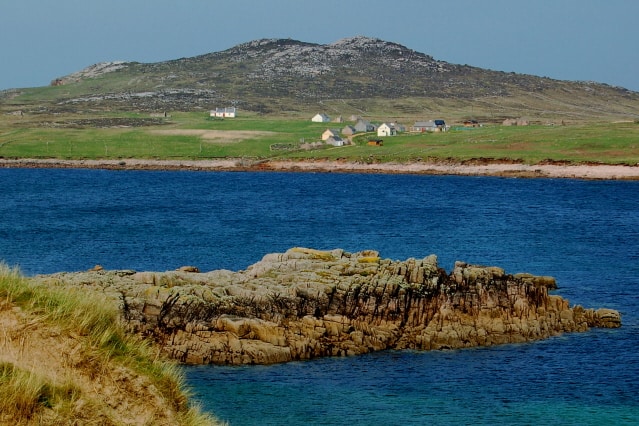
Popularly known as “the lake under a lake,” Owey Island Lake is located 164 feet underground.
©Joseph Mischyshyn / Creative Commons – License
Perhaps Owey Island Lake is one of the lakes with the most unique topography. This is because the lake sits underneath another lake, or as most people like to call it, “the lake under a lake.” One of Ireland’s most peculiar natural features may be seen on the island of Owey – a lake that exists just beneath another lake, located 164 feet underground and can be reached by descending a shallow sinkhole hidden near the top lake’s northern edge. The lake lies hidden behind a 150-meter-long (492 feet long) and 40-meter-high (131 feet high) cavern. It is fed by the lake above and a stream from the sea at the cave’s collapsed entrance. The underground lake is around 490 feet long and about 26 feet wide all the way around.
8. Grjótagjá, Iceland

Grjótagjá is famous for its geothermal hot spring.
©iStock.com/Juan Carlos fotografia
Although recent activity has made it too hot to swim in, this naturally heated lake sits beneath a spectacular rift and is still an excellent spot to visit. This small lava cave near Lake Myvatn in Iceland is famous for a geothermal hot spring, but we’re afraid you won’t be able to enter it. The cave has a unique history, as it was allegedly the home of criminal Jon Marcusson, and almost everyone feared it because it was pitch black, featured rocky cliffs, and was rumored to be home to trolls.
The only indication of its presence is a dramatic fissure in the surface above it. Because of its appearance in Game of Thrones, it is a famous tourist destination, but you can have it all to yourself if you arrive at the proper time.
7. Reed Flute Cave, China
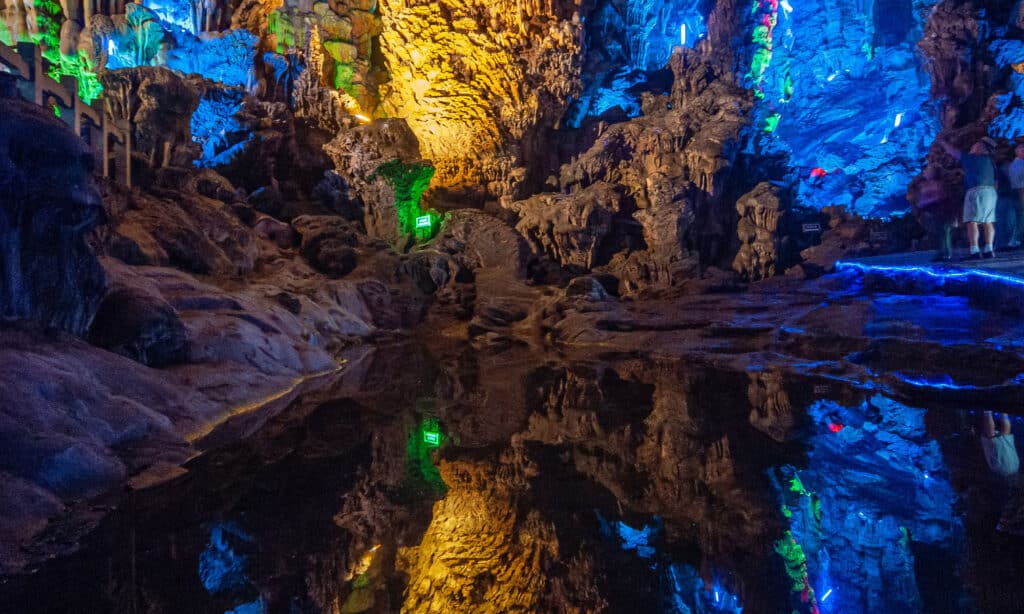
Reed Flute Cave is a 787-foot-long cave.
©iStock.com/ClaudineVM
The natural limestone sculptures inside China’s ‘Huge Art Palace of Nature’ are reflected in this beautiful lake. The 787-foot-long (240-meter) cave, formed of natural limestone and illuminated by artificial light, is a renowned tourist destination in China. It acquired its name from a reed blooming outside the cave’s entrance that could be used to make flutes. The Reed Flute cave in Guilin City features lakes also lighted by artificial light, allowing people to observe what’s going on below.
6. California Cavern, California

As you journey through tunnels and caverns 80 feet underground, you’ll come across several crystal clear pools of water.
©Dave Bunnell / CC BY 3.0, via Wikimedia Commons – License
There are a plethora of underground experiences to be enjoyed in California, and the one on this list is one of the best! The underground lake that emerges during the wet season is one of the most remarkable aspects of California Cavern. This body of water is a truly one-of-a-kind sight and a strange natural phenomenon that you must see for yourself.
One of the most impressive features of this vast cave system is the lakes it contains – as you journey through tunnels and caverns 80 feet underground, you’ll come across several crystal clear pools of water that are free to travelers who want to swim or float in them.
5. Kow Ata Underground Lake, Turkmenistan
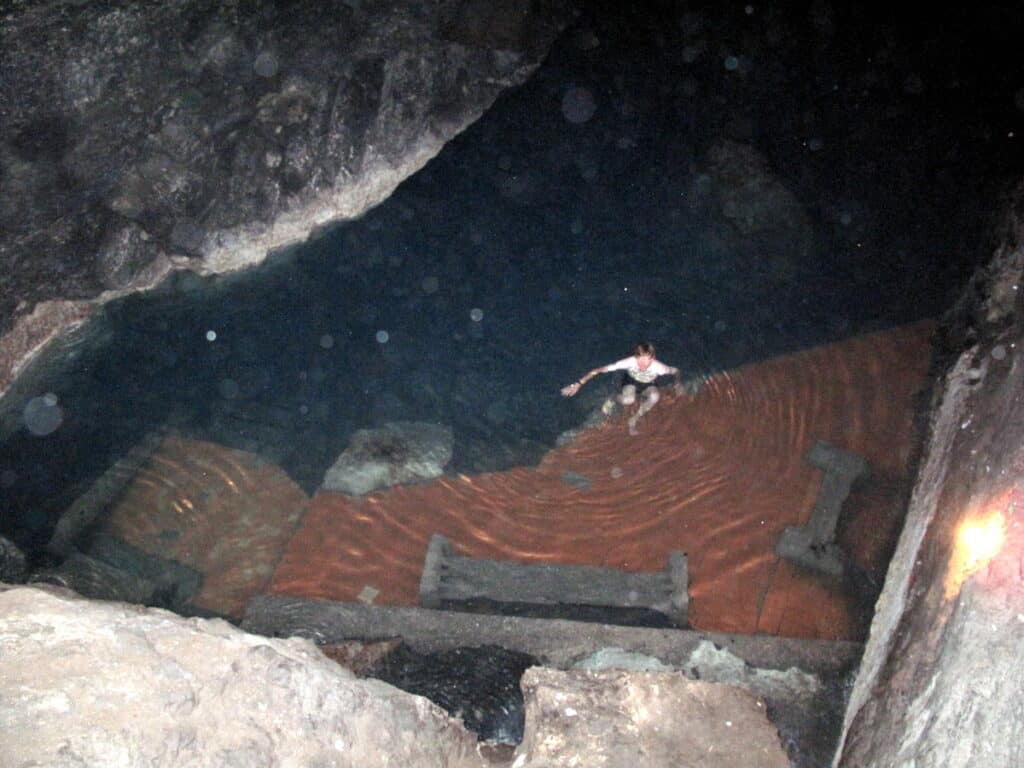
Kow Ata Underground Lake is one of the most popular swimming sites in the country.
©Peretz Partensky from San Francisco, USA / Creative Commons – License
The Kow Ata Underground Lake is a 200-foot-deep underground lake in Turkmenistan that is one of the most popular swimming sites in the country. It is nestled inside a cave that measures 820 feet or 250 meters long and 39 to 164 feet or 12 to 50 meters wide (varied). Located near Bäherden, Turkmenistan, the underground lake measures 55 meters (180 feet) deep from the cave’s third entrance, where no sunshine passes through. The water contains a significant mineral content and is particularly sulfur-rich, causing its distinctive smell. The water in the lake is transparent and blue-green. Kow Ata Lake is home to bats, rats, birds, and over 50 different invertebrate species.
4. Saint Leonard Lake, Switzerland
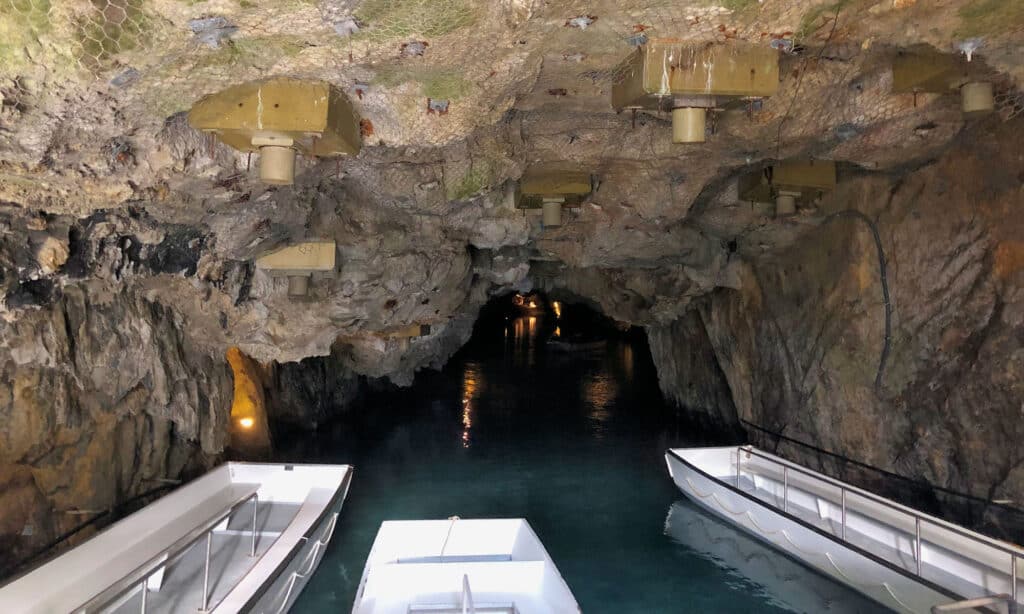
Saint Leonard Lake is the largest underground lake in Europe.
©iStock.com/Robert Buchel
Located in Switzerland, Saint Leonard Lake is regarded as the largest underground lake in Europe. The lake encompasses 64,583 square feet or 6,000 square meters. It has grown in popularity as a tourist destination, including excursions and boat trips into and around the caves. It was developed when groundwater dissolved a deposit of Triassic gypsum buried within impermeable Carboniferous strata. Before 1946, the water level was substantially higher, but on January 25, 1946, an earthquake with a magnitude of 5.6 on the Richter scale uncovered further fractures in the cave, making it more accessible. It has been freely accessible to tourists since 1949.
3. The Lost Sea, Tennessee, USA
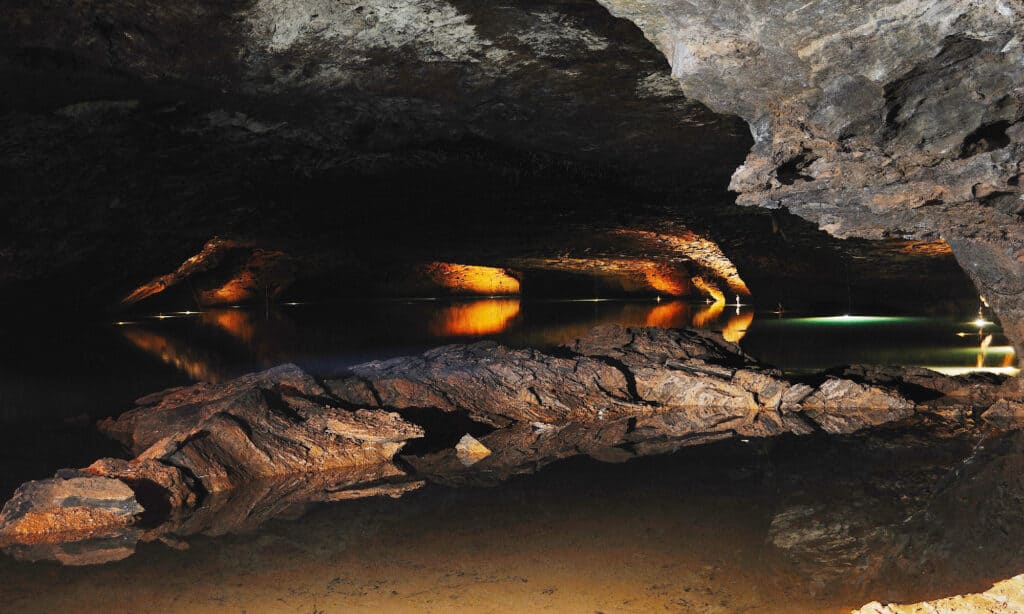
The largest underground lake in the United States, the Lost Sea, is part of Craighead Caverns.
©gracious_tiger/Shutterstock.com
Craighead Caverns, originally used as a Cherokee hideout, are home to the United States’ largest underground lake. The lake covers an area of nearly 172,222 square feet or 16,000 square meters and comprises multiple cave ‘rooms’ filled with water. Located in Tennessee, United States, the lake sits 138 feet (42 meters) below the surface. Craighead Caverns is a cave system that features ‘the lost sea,’ the world’s second-largest subglacial underground lake, measuring 800 feet by 220 feet. Massive stalactites and stalagmites and clean irrigated lakes, rainbow trout, and cave flowers may all be found in the caves. The cave system has become a famous tourist destination, with regular tours and boat rides. Its seashore, which is easily accessible via trek or boat excursion, is covered in rare anthodites, sometimes known as “Cave Flowers.”
2. Dragon’s Breath Cave, Namibia
Dragon’s Breath Cave, in Namibia’s Otjozondjupa Region, is home to the world’s largest non-subglacial underground lake, with an area of about 2 hectares (4.9 acres). The lake’s exact depth is unknown, but it is considered at least 430 feet deep. The cave sits around 330 feet below the Earth’s surface. It was discovered in 1986 and given its name because of the humid air that rises from its mouth. The lake itself has remained mostly unchanged due to its secluded location. It remains at a specific temperature, with resting conditions, and there is no typical vegetation noticeable in the lake due to the absence of sunlight. However, there have been stories of unique fish and critters flourishing in low-light settings, adding to the cave’s mystique.
1. Lake Vostok, Antarctica

Lake Vostok is the largest subglacial lake in the world.
©Goddard Space Flight Center / This file is in the public domain in the United States because it was solely created by NASA. NASA copyright policy states that “NASA material is not protected by copyright unless noted”. (See Template:PD-USGov, NASA copyright policy page or JPL Image Use Policy.)
Although there are only a few substantial non-subglacial lakes on the Earth, the world’s largest lake is subglacial, which means it is nestled beneath glacier ice. Like other subglacial lakes, Lake Vostok is situated in Antarctica. Lake Vostok is one of the world’s largest and deepest lakes, both above and below ground, and is larger than Lake Ontario in Canada, measuring 143 miles by 31 miles. Submerged 2 miles below the ice’s surface, Lake Vostok is also one of the lowest elevated lakes. The subglacial condition of Lake Vostok, like that of other underground lakes, implies that there is very little life in its waters, owing to the absence of sunlight. However, research has revealed some indicators of microbial life that thrive in these unusual settings.
Summary Of The 11 Largest Underground Lakes In The World
| Rank | Lake & Location | Size |
|---|---|---|
| 11 | Krizna Cave Lake, Slovenia | 5.46 miles & 25 feet deep |
| 10 | Son Doong Cave, Vietnam | Cave is 5.6 miles, river is 1.5 miles |
| 9 | Owey Island Lake, Ireland | 490 feet long and about 26 feet wide |
| 8 | Grjótagjá, Iceland | 0.2 miles |
| 7 | Reed Flute Cave, China | 787 feet long |
| 6 | California Cavern, California | 80 feet underground |
| 5 | Kow Ata Underground Lake, Turkmenistan | 200 feet deep |
| 4 | Saint Leonard Lake, Switzerland | 64,583 square feet |
| 3 | The Lost Sea, Tennessee, USA | 172,222 square feet |
| 2 | Dragon’s Breath Cave, Namibia | 4.9 acres & 430 feet deep |
| 1 | Lake Vostok, Antarctica | 143 miles by 31 miles |
The photo featured at the top of this post is © iStock.com/Robert Buchel
Thank you for reading! Have some feedback for us? Contact the AZ Animals editorial team.






